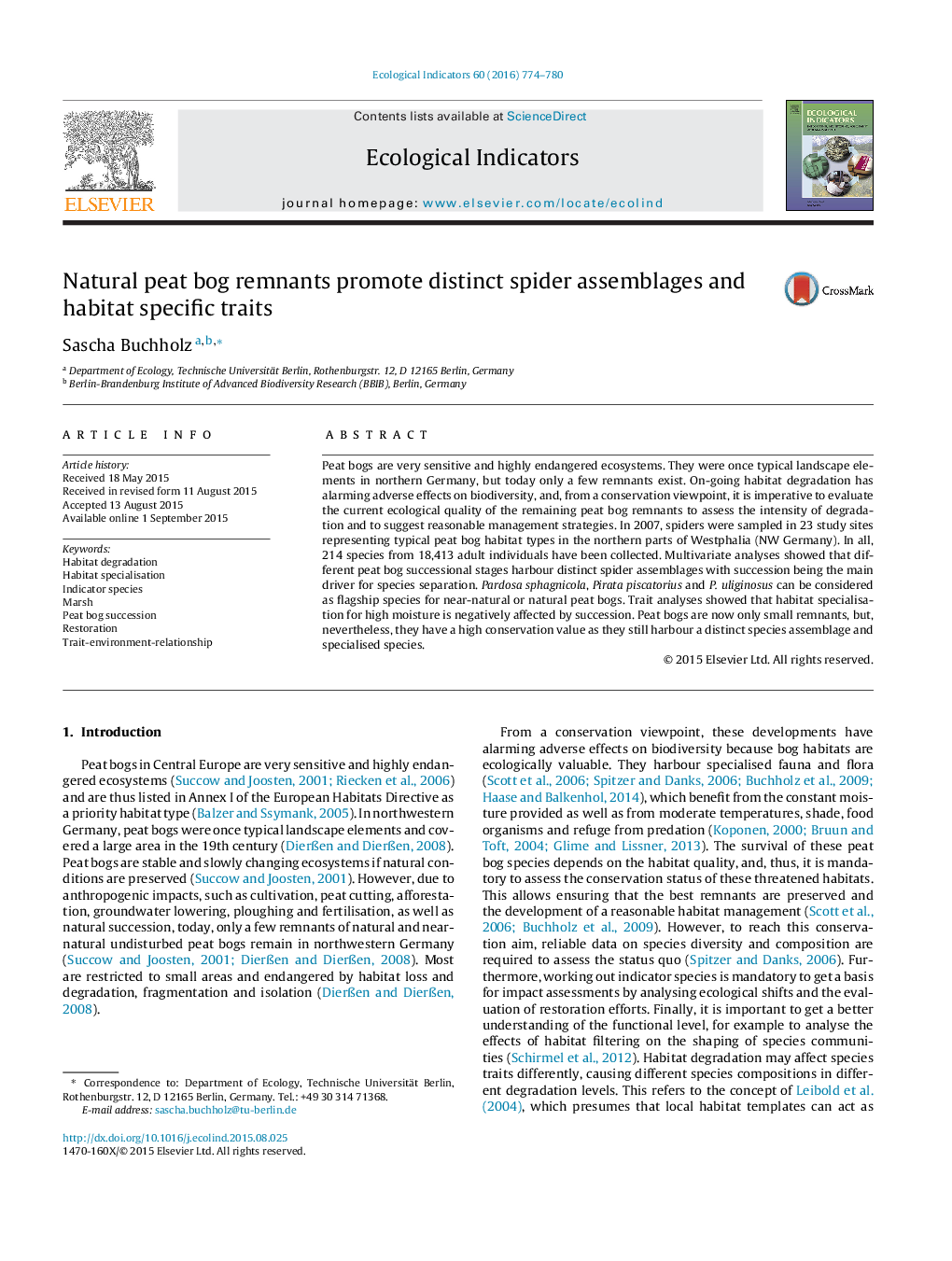| Article ID | Journal | Published Year | Pages | File Type |
|---|---|---|---|---|
| 6294154 | Ecological Indicators | 2016 | 7 Pages |
Abstract
Peat bogs are very sensitive and highly endangered ecosystems. They were once typical landscape elements in northern Germany, but today only a few remnants exist. On-going habitat degradation has alarming adverse effects on biodiversity, and, from a conservation viewpoint, it is imperative to evaluate the current ecological quality of the remaining peat bog remnants to assess the intensity of degradation and to suggest reasonable management strategies. In 2007, spiders were sampled in 23 study sites representing typical peat bog habitat types in the northern parts of Westphalia (NW Germany). In all, 214 species from 18,413 adult individuals have been collected. Multivariate analyses showed that different peat bog successional stages harbour distinct spider assemblages with succession being the main driver for species separation. Pardosa sphagnicola, Pirata piscatorius and P. uliginosus can be considered as flagship species for near-natural or natural peat bogs. Trait analyses showed that habitat specialisation for high moisture is negatively affected by succession. Peat bogs are now only small remnants, but, nevertheless, they have a high conservation value as they still harbour a distinct species assemblage and specialised species.
Related Topics
Life Sciences
Agricultural and Biological Sciences
Ecology, Evolution, Behavior and Systematics
Authors
Sascha Buchholz,
